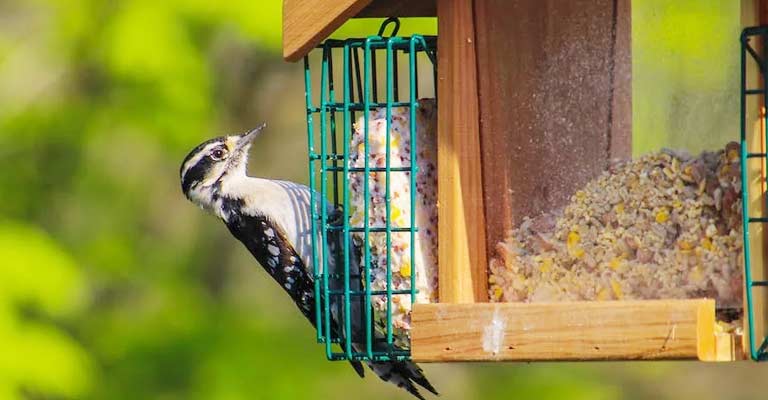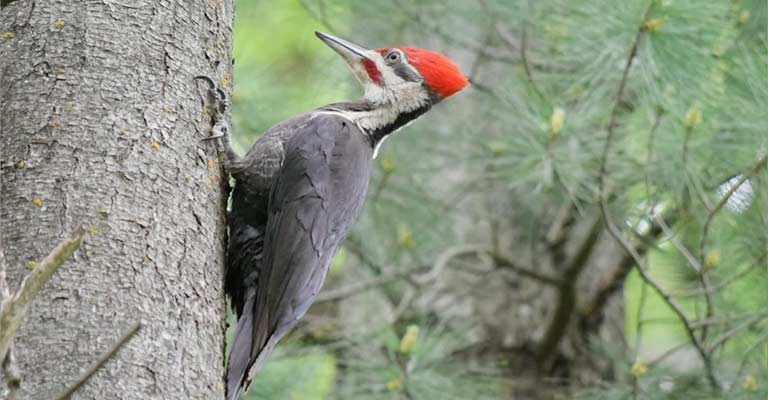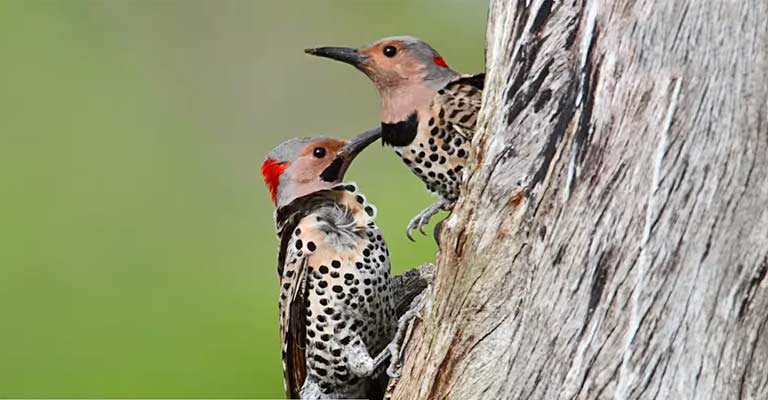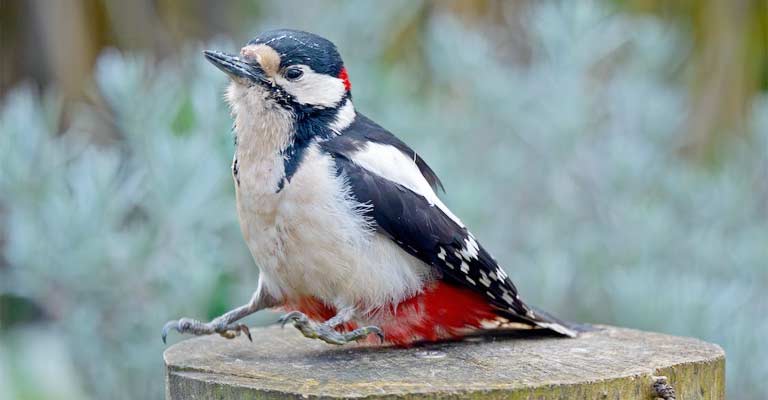The dynamic avian tapestry of Minnesota is adorned with the presence of woodpeckers, each species navigating the changing seasons in distinct ways.
The question of do Woodpeckers migrate from Minnesota unravels the intricate patterns of their behaviors in response to environmental shifts.
Some species embrace the resilience of year-round residency, while others embark on migratory journeys, seeking more temperate climates and abundant food sources.
Exploring the migration habits of woodpeckers in this northern state unveils a captivating narrative of adaptation and survival in the face of seasonal challenges.

Does Woodpecker Migrate From Minnesota?
In Minnesota, woodpeckers, like many bird species, exhibit varied migration patterns based on the severity of winter conditions and the availability of food.
While some woodpecker species, such as the Downy and Hairy Woodpeckers, are year-round residents in the state, others, like the Yellow-bellied Sapsucker, may migrate south to warmer regions during the winter.
Minnesota’s harsh winters can impact the insect availability that woodpeckers rely on for food, prompting certain species to seek milder climates. However, the migration behavior can vary even among individuals within a species.
Overall, the migratory patterns of woodpeckers in Minnesota are influenced by factors such as weather conditions, food sources, and individual species characteristics.
Reasons For Minnesota Woodpeckers Migration

Minnesota, with its diverse ecosystems and seasonal extremes, witnesses dynamic behaviors in its woodpecker populations. Understanding these reasons unveils the intricate dynamics of avian life in Minnesota. Here are some common reasons:
Winter Food Scarcity
Harsh winters in Minnesota can lead to a scarcity of the insects that woodpeckers depend on for food. Migration allows these birds to seek more abundant food sources in milder climates, ensuring their survival during the colder months.
Temperature Extremes
Extreme winter temperatures, especially in northern regions of Minnesota, can be challenging for woodpeckers. Migration allows them to escape the harshest conditions and find environments with more moderate temperatures that better suit their physiological needs.
Breeding Ground Availability
Woodpeckers often migrate to areas with favorable breeding conditions. Warmer climates can offer more extended periods of insect activity, providing abundant food resources essential for successful breeding and raising offspring.
Avoiding Competition
In winter, the limited availability of food resources can lead to increased competition among woodpeckers and other bird species. Migration allows some woodpeckers to avoid this competition and find less crowded foraging grounds.
Environmental Changes
Environmental changes, such as alterations in habitat due to deforestation or urbanization, can impact the availability of suitable nesting sites and food. Woodpeckers may migrate in response to these changes to find more hospitable environments.
Thermoregulation Challenges
The energy demands of thermoregulation during severe winters can be taxing for woodpeckers. Migrating to warmer areas reduces the energy expenditure required to maintain body temperature, contributing to their overall health and survival.
Instinctual Behavior
Migration is an ingrained instinct in many bird species, including woodpeckers. It is a behavior shaped by evolutionary processes to ensure the species’ survival by seeking optimal conditions for breeding, feeding, and raising offspring.
Which Woodpecker Migrates From Minnesota?

Minnesota, with its diverse woodpecker population, experiences dynamic patterns of migration among certain species. These woodpeckers navigate the changing seasons, responding to factors such as food availability and temperature extremes.
Here are five woodpecker species known to exhibit migratory behaviors in Minnesota:
Yellow-bellied Sapsucker (Sphyrapicus varius)
The Yellow-bellied Sapsucker is a migratory woodpecker that breeds in northern Minnesota during the summer. As winter approaches, it migrates to southern regions, including the southeastern United States and Central America.
This migration is driven by the need for a more temperate climate and abundant food sources.
Northern Flicker (Colaptes auratus)
While some Northern Flickers are year-round residents in Minnesota, the northernmost populations may migrate south during the winter.
These migratory movements are often influenced by the availability of their preferred food, including ants and beetles, as well as the severity of winter conditions.
Red-headed Woodpecker (Melanerpes erythrocephalus)
The Red-headed Woodpecker is a striking migratory species in Minnesota. During the winter, these woodpeckers leave their breeding grounds in the northern parts of the state and migrate to southern areas and parts of Mexico.
This migration is partly triggered by the search for wintering grounds with ample food resources.
Pileated Woodpecker (Dryocopus pileatus)
Pileated Woodpeckers are generally considered non-migratory residents in Minnesota. However, individual movements might occur based on food availability and local environmental conditions.
These iconic woodpeckers often establish territories and remain in their chosen habitats throughout the year.
Yellow-shafted Flicker (Colaptes auratus luteus)
The Yellow-shafted Flicker, a subspecies of the Northern Flicker, is known to migrate from northern regions, including Minnesota, to more southern areas during the winter. This migration is influenced by the need for milder conditions and an abundance of food resources.
Which Woodpeckers Don’t Migrate From Minnesota?

While some woodpeckers in Minnesota exhibit migratory behaviors to cope with seasonal changes, others are resilient year-round residents, adapting to the state’s diverse environments.
These woodpeckers demonstrate a capacity to endure the challenges presented by Minnesota’s winters and remain in their chosen habitats throughout the year.
Downy Woodpecker (Picoides pubescens)
The Downy Woodpecker, Minnesota’s smallest woodpecker, is a hardy resident that does not migrate. Well-adapted to winter conditions, it remains in the state year-round, foraging for insects and seeds.
Its ability to endure the colder months is attributed to its resourcefulness in finding food in various environments.
Hairy Woodpecker (Leuconotopicus villosus)
Similar to the Downy Woodpecker, the Hairy Woodpecker is a non-migratory resident of Minnesota. It thrives in a variety of habitats, including forests and urban areas, where it finds insects and larvae beneath the bark of trees.
This adaptability allows it to endure the winter months without the need for migration.
Black-backed Woodpecker (Picoides arcticus)
The Black-backed Woodpecker is a year-round resident in the northern forests of Minnesota. This species has specialized adaptations for foraging on insects beneath the bark of dead trees, making it well-suited to the winter conditions in its chosen habitat.
Red-bellied Woodpecker (Melanerpes carolinus)
Although the name might suggest a focus on the belly, the Red-bellied Woodpecker is a non-migratory resident in Minnesota.
This adaptable species makes use of various wooded habitats, including mixed forests and wooded suburbs, finding sustenance in insects, fruits, and seeds.
American Three-toed Woodpecker (Picoides dorsalis)
The American Three-toed Woodpecker, with its distinctive appearance and foraging habits, is a resident of Minnesota throughout the year.
Preferring coniferous forests, this woodpecker specializes in extracting insects from tree bark, showcasing its ability to endure the challenges of the state’s winters without migrating.
These woodpecker species exemplify the resilience and adaptability of resident birds in Minnesota, showcasing their ability to thrive year-round in diverse habitats and climates.
FAQs
What triggers woodpecker migration in Minnesota?
Woodpecker migration in Minnesota is triggered by factors such as winter food scarcity, extreme temperatures, and the need for suitable breeding grounds. Species like the Yellow-bellied Sapsucker migrate to find milder climates and abundant food sources.
Are any woodpeckers in Minnesota non-migratory?
Yes, several woodpeckers in Minnesota, such as the Downy Woodpecker, Hairy Woodpecker, and Black-backed Woodpecker, are non-migratory residents. They adapt to the state’s winter conditions and remain throughout the year.
Which woodpeckers migrate south during winter in Minnesota?
Woodpeckers like the Yellow-bellied Sapsucker and Red-headed Woodpecker migrate south from Minnesota during winter. This migration allows them to escape harsh winter conditions and find more favorable habitats.
Do woodpeckers return to Minnesota after migrating?
Yes, many migratory woodpeckers return to Minnesota after spending the winter in warmer regions. They come back in the spring to breed and take advantage of the more abundant food resources available during the warmer months.
How can I attract woodpeckers to my yard during migration?
To attract migrating woodpeckers in Minnesota, provide suet feeders, nuts, and fruits. Creating a habitat with suitable nesting sites, water sources, and a variety of food options enhances the chances of attracting these captivating birds.
Conclusion
In the forests and woodlands of Minnesota, the saga of woodpecker migration unfolds as a testament to the diverse strategies these birds employ to thrive in varying conditions.
While some, like the hardy Downy Woodpecker, stand resilient against winter’s grasp, others, such as the Yellow-bellied Sapsucker, embark on journeys southward.
This nuanced interplay between migration and residency enriches Minnesota’s natural landscapes, adding layers to the intricate lives of these captivating birds.
The question of woodpecker migration in Minnesota, ultimately, is an exploration of the delicate equilibrium these avian inhabitants strike to endure and perpetuate their species in this northern realm.